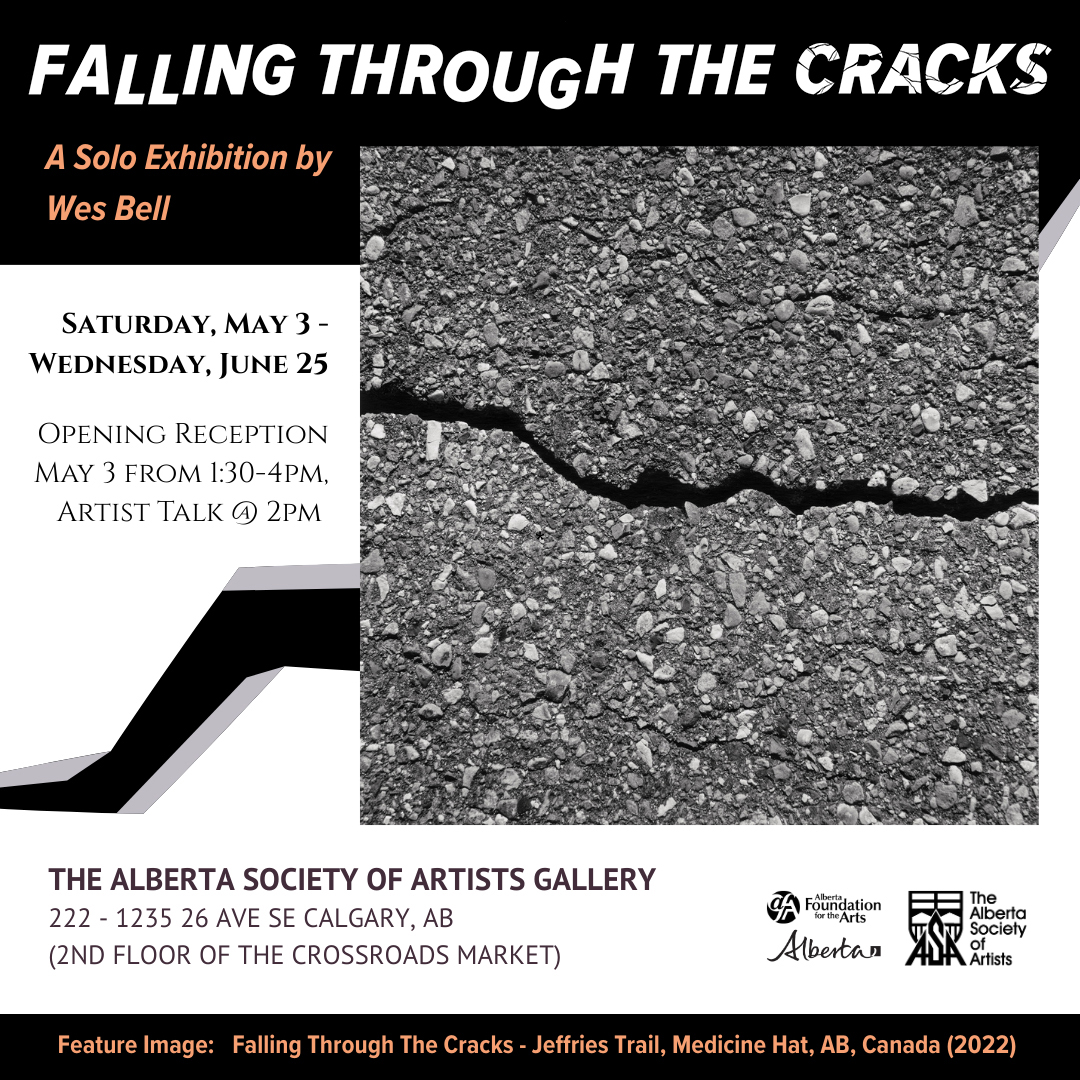FALLING THROUGH THE CRACKS
After repeated visits to the Emergency Department at our hospital, an ER physician looked me square in the eyes and said, "You're lucky you are alive. You could have died... I'm sorry, but you fell through the cracks." Not long after that, I had emergency surgery. After three months of recuperating at home, gingerly tending to the seven-inch diagonal incision on my abdomen as it healed into a permanent scar, I finally ventured outside for my first walk of the winter season. Treading cautiously into the howling Chinook wind, my head was tucked downward while my eyes remained focused on the ground with every calculated step I took. I started noticing large cracks in the wind-dried asphalt pathway. They were jagged, pronounced, precise—almost surgical. Recalling the ER physician's unforgettable words, the series Falling Through the Cracks began to take shape.
Months later, during a severe drought, beneath the long, sun-drenched daylight hours and the scorching dry heat of summer, I hiked the one hundred and fifty-five kilometres of our town's rolling, winding coulee prairie trail system, along with the familiar neighbourhood routes I take on my evening walks, assembling an inventory of cracks. Some were hairline cracks, while others were old, sizeable, worn, and crumbling. At times, attempts had been made to repair or slow down the deterioration of the broken surface material. Other cracks appeared butchered, barbaric, and blistered. Over time, the asphalt and concrete cracked as the ground settled or shifted. The prolonged exposure to harsh sunlight, accumulated snow and ice, and dramatic temperature swings, especially extreme heat and cold, coupled with the relentless freeze-thaw cycles, made the surface increasingly vulnerable to the elements.
Once again, I found myself exploring the strange, bifurcated world of beauty and brutality exposed in these weathered cracks. My emotional response, embodied in these analogue prints, calls to mind the familiar expression: "Everyone is broken; the cracks are how the light gets in", inspired by Leonard Cohen.
Given the focus of the subject matter—decomposition, deterioration, and degradation—it was critical to the logic of the series to preserve the immediacy of their chemical, indexical imprint on film. This imprint was then translated onto a slightly warm-tone, fibre-based paper for gelatin silver prints, creating a substantial presence that would have been impossible to achieve digitally.

Any personal information provided in a request to post a listing on the AFA newsfeed, or in the listing itself, will be used for the purpose of posting to the AFA’s newsfeed, administering the AFA’s website and providing individuals and organizations with information on AFA programs and events. Such information is collected under the authority of section 33 (c) of the Freedom of Information and Protection of Privacy Act and is protected by the privacy provisions of the Act. Should you have any questions about the collection of this information, you may contact Aaron Talbot, Arts Services Consultant – Communications, at 780-289-3781.
